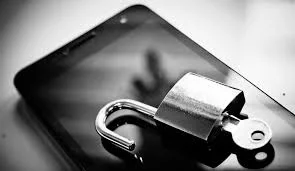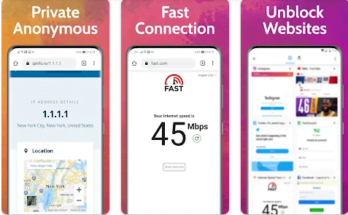private lock Is your phone as secure as it could be? In a world where our entire lives are stored on these pocket-sized devices, ensuring their protection is paramount. One of the simplest yet most effective ways to safeguard your personal information is by setting up a private lock. Let’s explore why this small step can make a big difference in keeping your data safe and how you can easily do it with our step-by-step guide!

Why private lock is important for your phone
In today’s digital age, our phones contain a treasure trove of personal information. From sensitive emails to private photos and confidential documents, our smartphones hold a wealth of data that we wouldn’t want falling into the wrong hands. This is why securing your phone with a private lock is crucial in safeguarding your privacy and protecting your valuable data from unauthorized access.
By setting up a private lock on your device, whether it’s a PIN code, pattern lock, fingerprint scan, or facial recognition, you create an additional layer of security that acts as a barrier against potential intruders. In case your phone gets lost or stolen, having a private lock ensures that whoever finds it won’t be able to easily breach into your personal information.
Moreover, with cyber threats on the rise and hackers becoming increasingly sophisticated in their methods, having a robust private lock mechanism adds an extra level of defense against potential security breaches. It gives you peace of mind knowing that even if someone gains physical access to your phone, they would still need the correct authentication to unlock it and access your sensitive data.
Choosing the right private lock option for your device
When it comes to choosing the right private lock option for your device, there are a few factors to consider. First, think about your preferences and convenience. Do you prefer using a pattern, PIN, password, or biometric method like fingerprint or face recognition? Each has its pros and cons.
Next, consider the level of security you need. For most users, a strong PIN or password is sufficient. However, if you handle sensitive information on your phone, you might opt for more advanced options like biometrics.
It’s also essential to think about ease of use. A complex lock might be secure but could become frustrating in daily use. Balance security with practicality to find the best fit for you.
Keep in mind that some devices offer additional features like two-factor authentication for added protection. Explore all available options before settling on the one that suits your needs best!
Setting up a private lock on an Android device
Setting up a private lock on your Android device is crucial for ensuring the security of your personal information. To begin, go to your phone’s settings and navigate to the “Security” or “Lock Screen” section. From there, you can choose from various options such as PIN, pattern, password, or biometric recognition like fingerprint or facial recognition.
Select the type of lock screen that suits your preference and provides the level of security you desire. Make sure to create a strong and unique passcode that is not easily guessable. This will add an extra layer of protection against unauthorized access.
Once you have set up your private lock, remember to customize any additional settings such as timeout duration before the screen locks automatically. Regularly update your passcode to enhance security measures and keep potential intruders at bay.
By following these steps diligently, you can safeguard your Android device against unauthorized access and protect your sensitive data effectively.
Setting up a private lock on an iPhone
Setting up a private lock on your iPhone is crucial to safeguard your personal information and data from prying eyes. To start, go to the Settings app on your device and select ‘Touch ID & Passcode’ or ‘Face ID & Passcode’, depending on your iPhone model. Next, enter your current passcode if prompted.
Then, tap on ‘Turn Passcode On’ if it’s not already enabled. You can choose between a 6-digit numeric code or a custom alphanumeric code for added security. Make sure to avoid using easily guessable codes like ‘123456’.
For newer models with Face ID, follow the instructions to set up facial recognition as an additional layer of security. Remember to keep your face within the frame during setup for accurate scanning.
Enable features like ‘Erase Data’ which wipes all data after multiple failed login attempts. This extra precaution ensures that sensitive information remains protected even in case of theft or loss.
Additional tips for securing your phone
Additional Tips for Securing Your Phone:
When it comes to securing your phone, there are a few extra measures you can take to enhance your device’s security. One important tip is to enable two-factor authentication on all your accounts linked to your phone. This adds an extra layer of security by requiring not only a password but also another form of verification.
Regularly updating your phone’s operating system and apps is crucial in keeping potential vulnerabilities at bay. Manufacturers often release updates that include important security patches, so it’s essential to stay up-to-date.
Avoid downloading apps from third-party sources and stick to official app stores like Google Play Store or Apple App Store. These platforms have measures in place to verify the authenticity and safety of the apps they host.
Be cautious when connecting to public Wi-Fi networks as they can be hotspots for cyber threats. Consider using a virtual private network (VPN) when browsing on unsecured networks for added protection against prying eyes.
By implementing these additional tips along with setting up a private lock on your phone, you can significantly improve its overall security posture.
Conclusion
Remember, securing your phone with a private lock is crucial in today’s digital age where personal information is at risk. By following the step-by-step guide provided for both Android and iPhone devices, you can ensure that your data remains protected from unauthorized access. Additionally, implementing additional security measures like two-factor authentication and regular software updates will further enhance the security of your device. Stay vigilant and proactive when it comes to safeguarding your phone, as prevention is always better than dealing with potential security breaches. Keep your private lock strong and unique to keep prying eyes away from your valuable information. Stay safe, stay secure!


